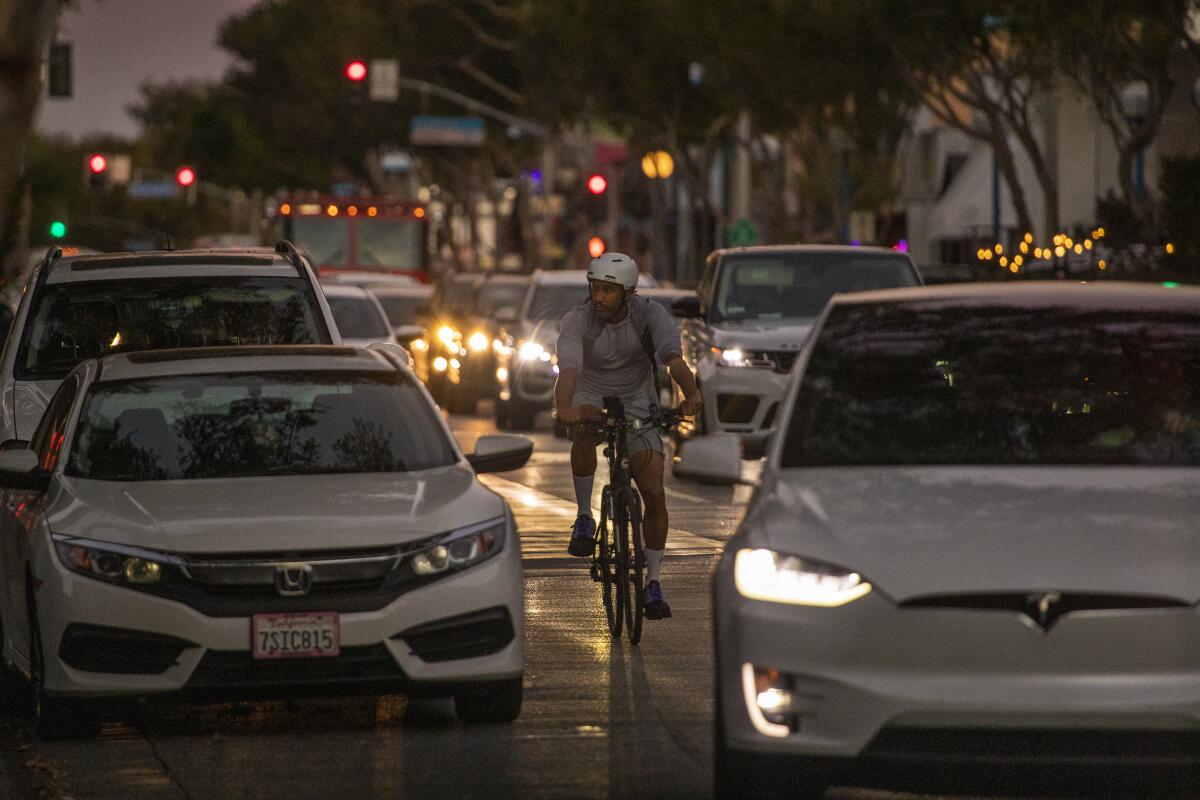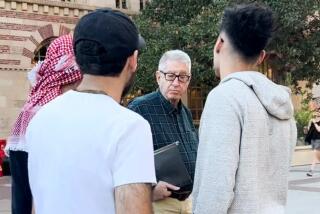Letters to the Editor: Cars, bikes and walking — oh my! Readers chime in on L.A.’s ‘nuclear’ traffic option

- Share via
To the editor: Regarding “the ‘nuclear option’ in L.A.’s war to rein in the mighty car” Angelenos sometimes oppose bike lanes and slow streets in isolation because they don’t see how it benefits drivers.
But when you add car-free affordable housing to the mix, the combination can convert skeptics. L.A. is planning to add millions of new homes in the coming years to address our housing crisis. This could compound our traffic nightmare. But if you build housing on walkable streets near transit, jobs and amenities, you create a 15-minute community, where people can meet most of their weekly needs without having to drive.
Removing parking makes housing more affordable, and building above local businesses on streets with safe bike and bus lanes makes it possible to live car-free even in the ultimate car city. This leads to less traffic and a healthier climate. Who doesn’t want that? We need to think holistically about transportation and housing.
Jenny Hontz, Los Angeles
..
To the editor: Traffic is so terrible — shutting down or removing lanes on roads is not a realistic answer. But protecting cyclists and pedestrians is imperative.
What are alternative ideas that could work? What about removing street parking, creating bike lanes in its place, with concrete barriers for cyclists’ protection. Build city-run metered parking garages throughout the city to replace the street parking.
This would keep streets and lanes open to traffic, create safety zones for bikes and the revenue from metered garages could waylay at least some of the costs.
We are a city of creative people. There has to be a way to keep traffic flowing and protect cyclists and pedestrians.
Lisa A. Landres, Venice
..
To the editor: It is disingenuous for The Times to present yet another piece on converting L.A. streets from car to bicycle traffic without including detailed discussion about one thing that could make this laudable goal a reality: a halfway-decent mass transit system.
In L.A. people still have to drive to work. We are not Amsterdam, where the city and suburbs are crisscrossed with timely trams, buses and Metro stops.
We have a distressing system that run intermittently, often every 20 minutes or so, which is one of the primary reasons people need to drive their cars.
Until this changes dramatically, removing car lanes is futile and will only lead to the protests and bottlenecks previous “road diets” have triggered.
Also, the average August high temperature in Amsterdam is 71 degrees. People can ride bikes to work wearing business suits. Imagine the folly of expecting Angelenos to do the same on a daily basis in a hot week like this one.
Kirk Jordan, Long Beach




